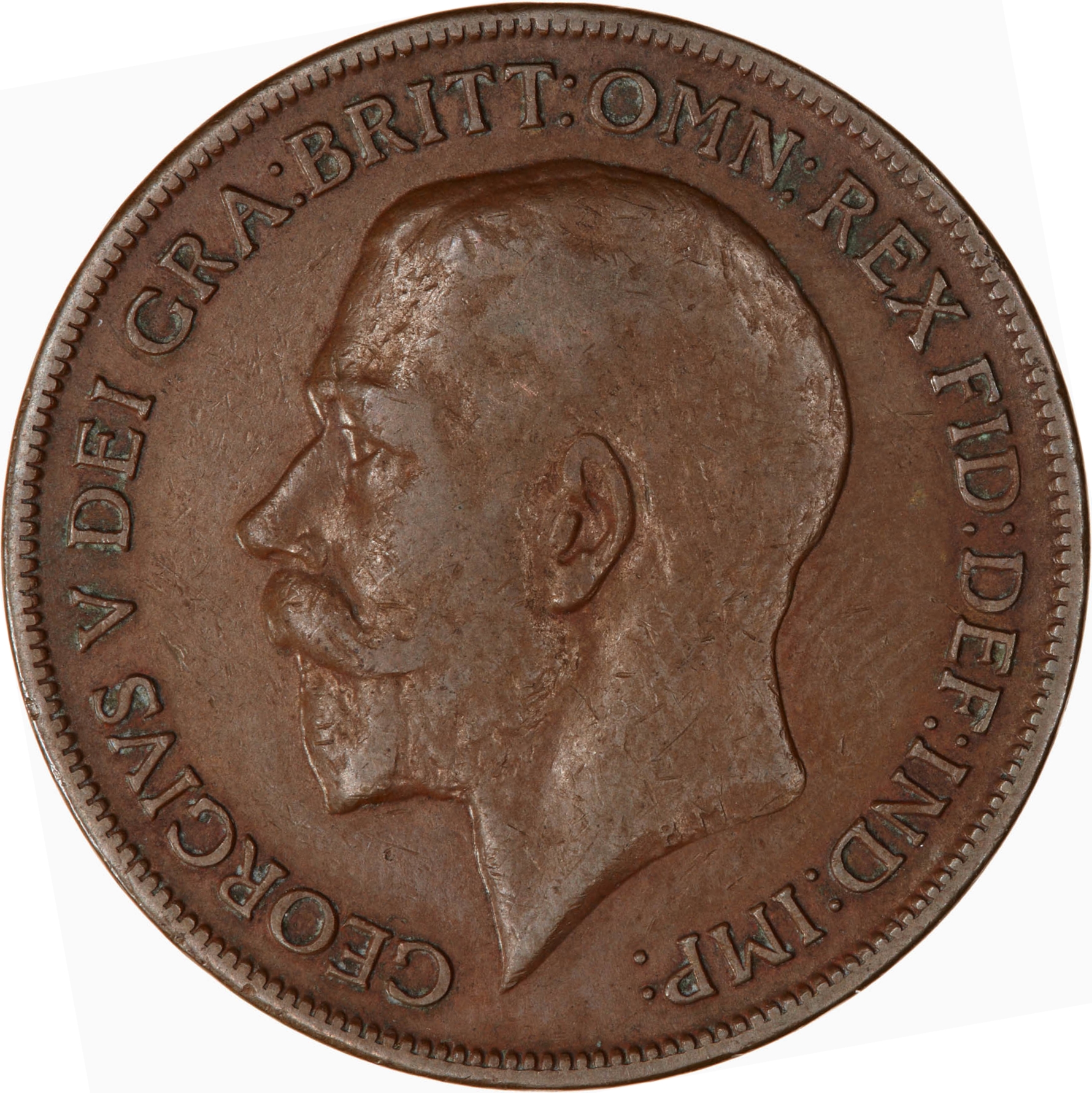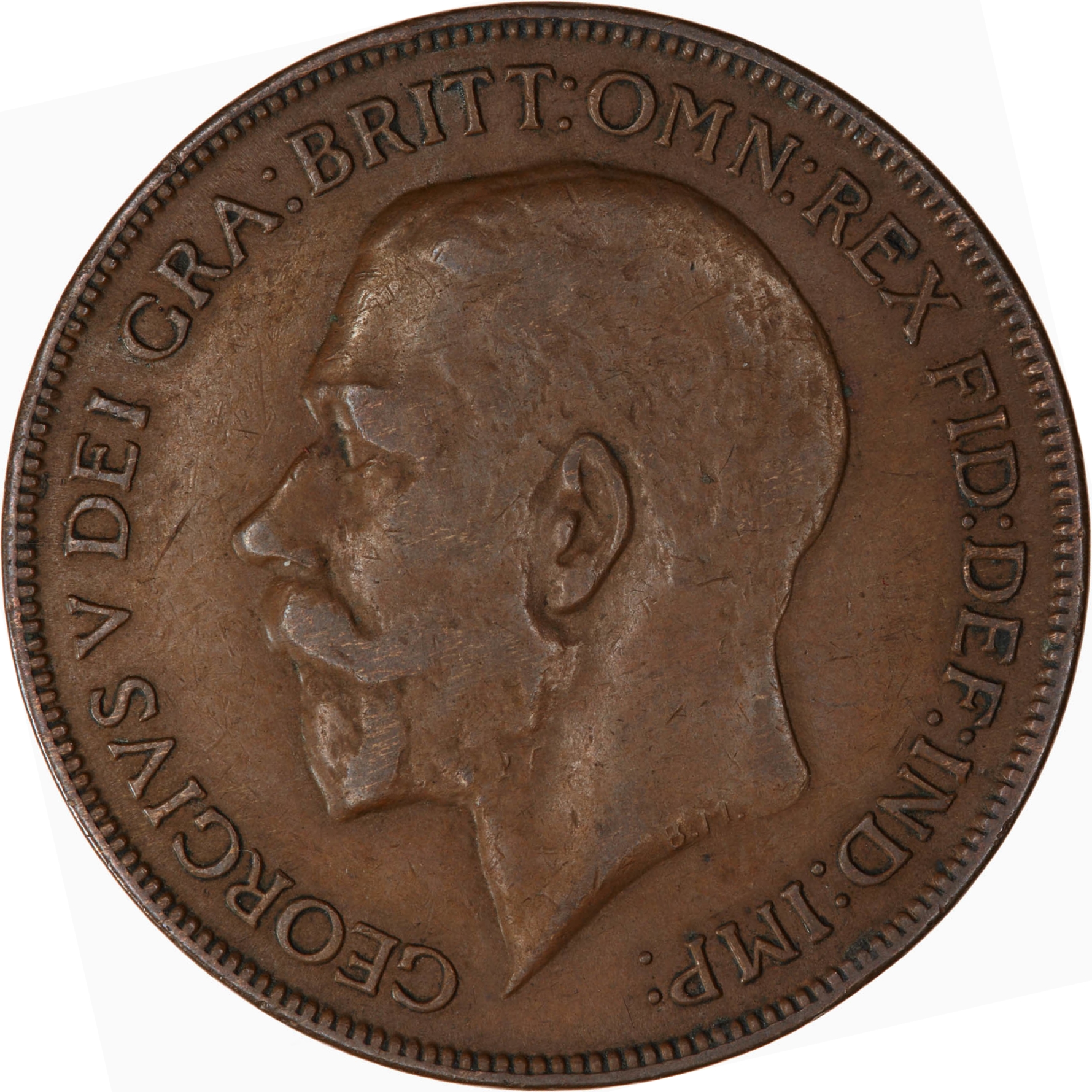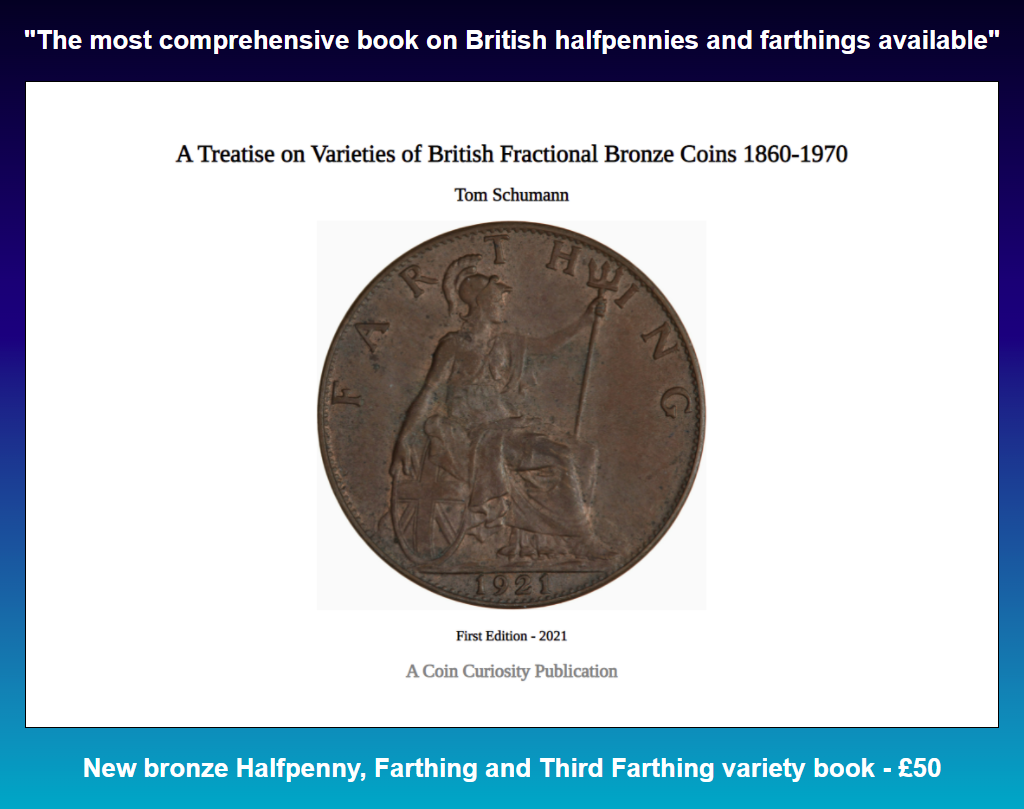British Penny Varieties 1920-1921
In his authoratative work on British bronze coins Michael Freeman lists two different obverse dies as being used for both the 1920 and 1921 pennies and a total of five different penny obverse designs as having been used during the reign of George V, though subsequent research has revealed an even greater number. Successive changes to the obverse were attempts at reducing ghosting (the impression of one side's design showing through on the other side) and 1920 and 1921 saw the combined use of both Freeman obverse 2 and Freeman obverse 3. The obverses can most easily be distinguished by the space between the words GRA and BRITT - on obverse 3 the space is wider than on obverse 2.

The existence of a 1920 penny with obverse 3 (Freeman 189) is a little difficult to explain - there is apparently only one example known and it currently resides in the British Museum (p212, Freeman, The Bronze Coinage of Great Britain, 2006). Possibly it was produced to test the suitability of the newer obverse 3 but given the eventual adoption of obverse 3 for a majority of 1921 and 1922 it seems unlikely that just one example would have survived if it were tested in 1920. It also seems unlikely that a pattern for something as mundane a new obverse die to reduce ghosting would be sent to the British Museum. The existence of 1921 pennies with obverse 3 on the other hand is easily explained by the introduction of yet another modification to the obverse to combat ghosting part-way through the production of 1921 pennies - V.R. Court’s survey of pennies shows that around 37% of 1921-dated pennies have obverse 2 and about 67% of 1921-dated pennies have obverse 3 (p67, Court, Coin Monthly, Sep 1972), so obverse 3 was either created part-way through production of 1921-dated pennies or it was created at or before the start of production of 1921-dated pennies and the Royal Mint chose to use up its remaining stock of obverse 2 dies during later production.

A possible explanation for the existence of a 1920 penny with obverse 3 is that the British Museum requested an example of a 1920 penny for its collection late in 1921 and the obverse die that was used to produce it just happened to be a newer obverse 3 rather than the usual obverse 2 which all other 1920-dated pennies were almost certainly struck with. Certainly in 1908 and again in 1919 it appears that the British Museum had not kept their collection of British Indian coins up to date and requested that both the Bombay and Calcutta Mints send coins of every date for the British Museum collection (vii, Stevens & Weir, The Uniform Coinage of British India 1835 to 1947 A Catalogue and Pricelist, 2012), so there is a precedence for this. The British Museum’s registration for the 1920 obverse 3 penny is 1921,0326.11 (British Museum, http://www.britishmuseum.org/research/collection_online/collection_object_details.aspx?objectId=1046504&partId=1) which, while not entirely reliable (British Museum, https://www.britishmuseum.org/research/collection_online/collection_search_guide.aspx), does suggest that the penny was acquired and hence likely struck in 1921.
Images provided by Museum Victoria and Museum Victoria under Creative Commons Attribution 4.0 International
Also available at Online Coin Club

